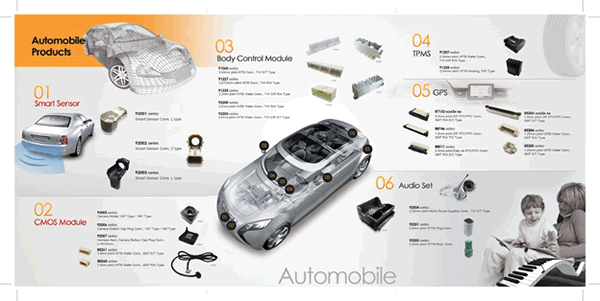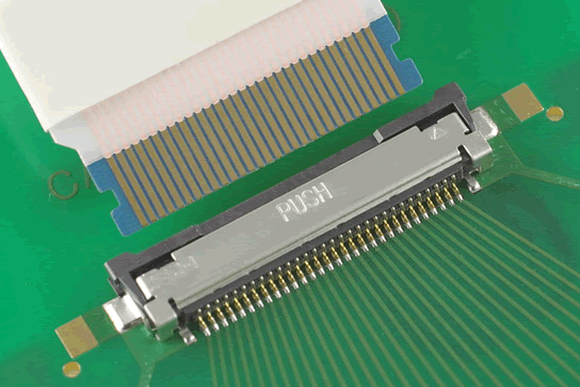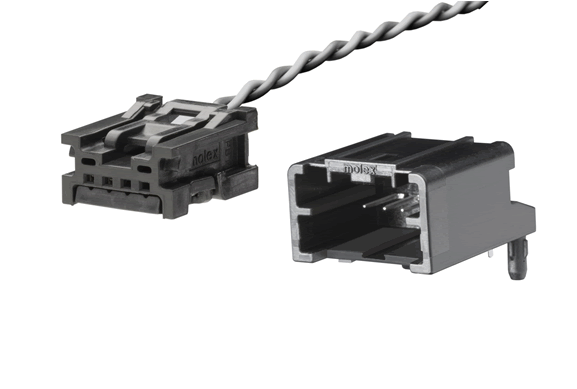Connector Makers Adapt to a Changing Automotive Market
Networking, safety, infotainment, and electric powertrains are driving a changing automotive market for connector manufacturers.
Automakers are adding safety systems, enhancing infotainment technology, and revamping powertrains to boost mileage and decrease emissions. All these changes are altering the landscape for connector makers, who must develop a range of options that all meet a primary goal: provide extremely high reliability over long vehicle lifetimes.
Electronics and software have become product differentiators for automakers in recent years. That trend will continue as developers add infotainment options and safety systems that will set the stage for autonomous driving.
The addition of cameras and other safety-related sensors, along with multiple connectors needed for battery packs used in electrified powertrains, is driving growth in the connector world. In 2016, Bishop & Associates estimated that automotive connector sales were over $12.7 billion and are expected to exceed $17.6 billion by 2022, a compound annual growth rate of 5.8%. To meet new demands, connector makers must adapt to changes in networking and wiring harnesses.
Speeds Are Rising Rapidly
“The biggest area of change we are seeing is the demand for faster and faster performance,” said Mike Gardner, advanced technology market development director at Molex. “The era of traditional crimp and poke terminals with single or differential pair wires is rapidly coming to an end. This has a big impact on who can build these otherwise high-performance cables. Speed/bandwidth, I/O density, and wire termination challenges are the main changes driving demand for our next-generation solutions in the automotive industry.”
As in many fields, many automakers and Tier 1 suppliers are focusing more on completed cable assemblies. Researchers predict solid growth in this segment. Bishop’s 2017 World Cable Assembly Market report pegged 2016 revenues at more than $41.2 billion and predicted growth in excess of 5%, rising to $53.7 billion in 2021.
Wiring Has Become a Focal Point
Existing wiring harnesses often can’t meet either bandwidth or weight requirements, so wiring has become a focal point. Electromagnetic interference (EMI) is also a critical factor now that connectivity is moving into the mainstream by leveraging cellular technology.
“We’re seeing a transition from electrical cables to coaxial cables,” said Jason Chen, senior director of product development at ACES Electronics Co. “EMI problems are increasing, so OEMs want to change.”

Figure 1 Automotive connectors must fit many requirements. Source: Aces
Harsh Environments, Safety, and Infotainment Intensify Challenges
The broad range of requirements for different automotive applications intensify the challenge of designing connectors that are reliable enough to survive harsh automotive environments over vehicle lifetimes that often exceed a decade. Automakers sometimes compound the task by asking for proprietary components.
“Many interconnects are custom-built to OEM designs,” said Mark Ernstberger, regional manager for I-PEX Connectors. “Shielded, higher data rate, and smaller, more robust interconnects are needed for cabin electronics used for safety and infotainment applications.”
As in every part of automotive design, engineers are focused on reducing weight and component counts. Engineers who specify connectors are trying to maximize the efficiency of every wire and contact.

Figure 2: I-PEX connectors are used in automotive displays.
A Growing Number of Networks
More networks are being used in lieu of wiring harnesses. CAN (controller area network) remains dominant, while LIN (local interconnect network) is used for low-speed applications, such as doors and seats. The number of networks continues to rise, prompting most planners to explore higher-bandwidth networks like Ethernet, since a single Ethernet network can replace several CAN connections.
The HDBaseT Alliance hopes to win the support of designers who are moving from CAN to faster networks. Delphi Automotive recently partnered with Valens, the developer of HDBaseT, which is widely used in audio-visual systems thanks to its lightweight cabling. Regardless of the networking architecture they use, automotive developers are focused on optimizing connectors and pin counts.
“The networked vehicle allows for a reduced number of cable links by nature of getting the data on the bus quicker and distributing it around the vehicle,” Gardner said. “Unlike a vehicle without a network, which uses an approach called a star configuration where each sensor must report directly back to a single electronic control unit (ECU), a network approach allows connection points to be localized and placed onto a backbone. The net result is fewer wires and connection points within high pin-count connectors.”

Figure 3 Molex has trimmed the size of its Mini50 automotive connectors.
Sensors in Outdoor Environments Put Connectors to the Test
Sometimes automotive sensors are placed outside of the cabin. For example, radar and ultrasonic sensors are often behind bumpers, and lidar sensors may also be positioned outside the cabin. While U.S. and European automakers generally put forward-looking cameras inside by rear view mirrors, Chinese manufacturers often put them outside, impacting environmental requirements.
“Cameras exposed to outdoor environments are moving from IP66 waterproof ratings to IP67 and to IP69K,” Chen said. “High-resolution cameras are transmitting from 30,000 to one million pixels per second, so connector performance also has to be high.”
The blend of high performance and durability will become even more important as advanced safety features give vehicle systems the ability to hit the brakes and steer to avoid accidents. These functions, which will evolve into autonomous driving, can’t have failures. That means connector makers will have to continue to improve quality and ruggedness.
“This requires new testing methods to be developed and investments in testing resources to validate performance,” Gardner said. “This question of validation becomes a bigger challenge as it no longer is just a mechanical validation effort. The high-speed electrical link solution must also be tested and validated. That includes the entire channel from chip to chip. Without it all being in balance, the connector can be perfect, but if the system is faulty at the ECU design, the connector and cable become the antenna for EMI failures.”
Designers Want More Power
Continued interest in electrified powertrains further confounds planning for connector companies. Despite lofty predictions and huge investments around the globe, battery-powered vehicle sales still account for less than 5% of the U.S. market. However, that may be different in China, the world’s largest automotive market. Connector suppliers who focus on China are ramping up for a new generation of vehicles with short charging times.
“Current will increase for connectors in electric vehicles,” Chen said. “Designers want more power. These connectors, which are designed to the Chinese Standard GB20234, are going to 250A and up to reduce the recharge time.”
Pure electric vehicles (EVs) are particularly attractive to companies throughout the electronics supply chain. A recent research report from Technavio noted that 70% of the EV’s content is electric/electronic systems, which require high-speed communication between the systems. The report also noted that the electrification of the powertrain and the addition of more safety features are key factors that are driving changes in wiring and connectors.
A Perfect Marriage: The Future of IDC and Press-Fit Contacts in Automotive
Recently posted:
[related_posts limit=”10″]
- State of the Industry: 2022-2023 Connector Sales - April 16, 2024
- Amphenol is On a Roll - April 2, 2024
- Nicomatic Proves That Two Heads are Better Than One - March 26, 2024






